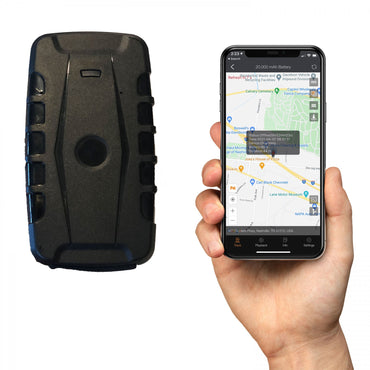
Securing Your Digital World: A Deep Dive into Bluetooth Security
- on May 08, 2024
- Categories: SpyGadgets
In the age of ubiquitous wireless technology, Bluetooth has become a cornerstone of connectivity, facilitating the seamless exchange of data across devices. Yet, its widespread adoption has also opened up new avenues for cyber threats. This comprehensive guide explores the intricacies of Bluetooth security, shedding light on the vulnerabilities that come with it and providing practical advice to safeguard your digital life.
Understanding Bluetooth Technology Bluetooth technology uses short-range radio frequencies to establish wireless personal area networks (WPANs), connecting devices within close proximity—usually less than 30 feet. Despite its convenience, the open nature of Bluetooth technology makes it susceptible to security breaches.
The different protocols and how they are optimized for various device needs:
- Bluetooth Classic
-
Frequency: Operates primarily in the 2.4 GHz ISM band.
-
Use Case: Suited for continuous data streaming.
- Typical Devices:
- Audio devices (headphones, speakers)
- Vehicle hands-free systems
-
Wireless keyboards and mice
- Bluetooth Low Energy (BLE)
-
Frequency: Also utilizes the 2.4 GHz ISM band but designed for minimal power consumption.
-
Use Case: Optimized for applications requiring periodic updates with minimal energy usage.
Typical Devices:
- Fitness trackers
- Smart watches
-
Health monitors
- Bluetooth High Speed
- Frequency: Based on the 802.11 protocol, using Wi-Fi frequencies for higher data rates.
- Use Case: Used when large volumes of data need to be transferred quickly.
- Typical Devices:
- Fast data syncing devices
-
High-definition multimedia transfer devices (HD video streaming)
- Bluetooth Mesh
- Frequency: Uses the same 2.4 GHz ISM band but enables a mesh network for device communication.
- Use Case: Ideal for creating large-scale device networks for comprehensive control.
- Typical Devices:
- Smart home devices (lights, thermostats)
- Industrial IoT systems for automation and monitoring
Key Points:
- Range and Connection: Operates on 79 different frequencies to avoid interference.
-
Device Compatibility: Connects a diverse array of devices, including smartphones, headphones, and home security systems.
Bluetooth-related security threats such as bluejacking, bluesnarfing, and bluebugging have caused various levels of concern and damage to users over the years.
Major Bluetooth Security Threats To understand how to protect yourself, it's crucial to first know the types of attacks that can target Bluetooth-enabled devices.
Bluejacking
What is it?: Sending unsolicited messages to discoverable devices.
- Impact: Generally harmless but can be used for spam or phishing.
-
Prevention: Keep your device’s Bluetooth invisible when not actively pairing.
Bluejacking is often seen as the least harmful Bluetooth attack, mainly involving the sending of unsolicited messages to discoverable Bluetooth devices. These messages could be as benign as advertisements or as dangerous as phishing attempts. Despite its potential for annoyance, bluejacking doesn’t typically result in data theft or serious security breaches. It has mostly been used for advertising or pranks, not extensive criminal activity (NordVPN, 2022).
Bluesnarfing
- What is it?: Unauthorized access to information on your device.
- Impact: Theft of personal data such as contacts, emails, and even passwords.
- Prevention: Update your devices regularly to patch security vulnerabilities.
Bluesnarfing, however, is more invasive, where an attacker exploits Bluetooth connections to secretly access information like contacts, emails, and more from a victim's device. This type of attack has been particularly problematic because it can result in the loss of sensitive personal data, leading to potential identity theft and financial fraud. Preventative measures include turning off Bluetooth when not in use and ensuring your devices are not discoverable by strangers (The Tech Edvocate).
Bluebugging
- What is it?: Gaining complete control over a device.
- Impact: Severe, as it allows the attacker to make calls, send messages, and access the internet.
-
Prevention: Use devices that require physical confirmation or PIN before pairing.
Bluebugging is the most severe among these, allowing hackers complete control over a device. This can include accessing the device’s data and even using its features, such as the microphone and camera, without the owner’s knowledge. The impact here is profound, as it compromises personal privacy to a significant degree. It's essential to use devices with updated Bluetooth protocols to minimize vulnerabilities (NordVPN, 2022).
BlueBorne Attack
- What is it?: Exploiting Bluetooth connections to transmit malware.
- Impact: Can spread quickly between devices, causing widespread damage.
- Prevention: Disable Bluetooth when not in use, especially in public areas.
The BlueBorne attack is a significant cybersecurity threat that exploits vulnerabilities in Bluetooth technology to take control of devices without any user interaction. Discovered by Armis Labs in 2017, BlueBorne affects billions of devices across different platforms including Android, iOS, Windows, and Linux. The vulnerabilities allow attackers to perform a range of malicious activities such as data theft, spreading malware, and executing remote code.
BlueBorne is particularly dangerous because it can affect devices even without being paired and does not require any action from the user, making it a stealthy and effective method of attack. Despite patches released by some manufacturers, many devices remain vulnerable either due to lack of updates or because they are unpatchable. This ongoing risk underscores the importance of regularly updating device software and practicing good cybersecurity hygiene.
For more detailed information about the BlueBorne attack and its impacts, you can visit the following sources:
- Bleeping Computer's report on the vulnerabilities and their impact on different operating systems: BlueBorne Vulnerabilities Impact Over 5 Billion Bluetooth-Enabled Devices
- Armis Labs' comprehensive overview of BlueBorne and the affected devices: BlueBorne | Armis
- Trend Micro's discussion on the scope of BlueBorne's impact on devices: BlueBorne: Bluetooth Vulnerabilities Expose Billions of Devices to Hacking
- SecurityWeek's follow-up on the persistent vulnerabilities a year after disclosure: One Year Later, Over 2 Billion Devices Still Exposed to BlueBorne Attacks
Each of these attacks exploits the Bluetooth technology to varying degrees and requires users to be vigilant about their device settings and the visibility of their Bluetooth connectivity. It's crucial to regularly update devices, use strong, unique PINs, and turn off Bluetooth when it's not needed to reduce the risk of these attacks.
The DeScammer and Its Role in Bluetooth Security While the DeScammer is specifically designed to detect Bluetooth skimmers—devices that illegally capture credit card information—it highlights the broader need for awareness and tools to combat Bluetooth-based security threats.
Detailed Recommendations for Enhancing Bluetooth Security Protecting your devices from Bluetooth threats requires a proactive approach. Here’s what you can do:
- Regular Updates: Always install the latest software updates for your devices.
- Manage Connectivity: Turn off Bluetooth when not needed, and set your device to non-discoverable.
- Physical Security Measures: Use strong, unique PINs for pairing devices.
- Educational Awareness: Stay informed about the latest security threats and how to combat them.
Emerging Threats and Future Outlook As technology evolves, so too do the tactics of cybercriminals. Recent discoveries like the BlueBorne attack and vulnerabilities in Bluetooth encryption protocols necessitate ongoing vigilance.
- Research and Development: Continual improvements in Bluetooth security protocols.
- Community Engagement: Reporting and addressing vulnerabilities through collaborative platforms.
Conclusion: The Critical Role of Awareness in Bluetooth Security The convenience of Bluetooth technology brings with it significant security risks, but awareness and proactive security practices can greatly mitigate these. By understanding the threats and implementing the strategies outlined in this guide, users can enjoy the benefits of wireless technology without compromising their privacy and security.
Further Reading and Resources For those looking to delve deeper into the technical aspects or stay updated on the latest in Bluetooth security, visiting established cybersecurity websites like Norton, NIST, and the official Bluetooth SIG site can provide valuable insights and updates.
By fostering an understanding of Bluetooth security risks and adopting comprehensive protective measures, we can secure our digital interactions in this connected world.
This table provides a range of resources aimed at enhancing Bluetooth security, featuring both free and paid options. It includes authoritative guides like the NIST Guide to Bluetooth Security, practical courses on Udemy, and security software from Norton and Avast which include features to combat unauthorized Bluetooth connections. Additionally, there are webinars and articles available for no cost that provide further learning opportunities and the latest information on Bluetooth vulnerabilities. For those seeking tools to manage Bluetooth device connections, the Fing app offers both free and premium services to detect and manage devices effectively. These resources collectively furnish users with the knowledge, skills, and tools needed to protect themselves from Bluetooth security threats.
Bluetooth Security Resources
|
Resource Type |
Description |
Availability |
Link |
|
Guides |
NIST Guide to Bluetooth Security |
Free |
|
|
Courses |
Bluetooth Security Best Practices |
Paid |
Udemy Course |
|
Tools |
Norton Mobile Security - includes Bluetooth security features |
Paid |
Norton Security |
|
Software |
Avast Mobile Security - protects against unauthorized Bluetooth connections |
Free/Paid versions |
Avast |
|
Webinars |
How to Secure Your Bluetooth Devices |
Free |
Cybersecurity Webinar |
|
Articles |
Comprehensive article on Bluetooth vulnerabilities and how to protect against them |
Free |
Bluetooth.com Security |
|
Apps |
Fing - Network Scanner, helps detect and manage Bluetooth devices |
Free/Paid versions |
Fing App |
Different Bluetooth Protocols
|
Bluetooth Protocol |
Description |
Common Uses |
|
Bluetooth Classic |
Utilizes Basic Rate (BR) and Enhanced Data Rate (EDR) for higher data transfer. |
Headsets, car stereo systems, wireless keyboards, mice. |
|
Bluetooth Low Energy (BLE) |
Designed for short bursts of data. Uses less power. |
Fitness trackers, smartwatches, healthcare devices. |
|
Bluetooth High Speed |
Based on Wi-Fi, it supports faster data transfer. |
High-definition multimedia, fast data syncing. |
|
Bluetooth Mesh |
Allows for creating large networks of devices that can communicate with each other. |
Smart home automation, industrial IoT. |





![SC72004K Night Vision [Bottom View] Smoke Detector 4K Hidden Camera DVR [Battery Powered]](http://www.spygadgets.com/cdn/shop/products/hd_smoke_detector_hidden_camera__16301__95942.1536589815.1280.1280_370x.jpg?v=1607376006)





